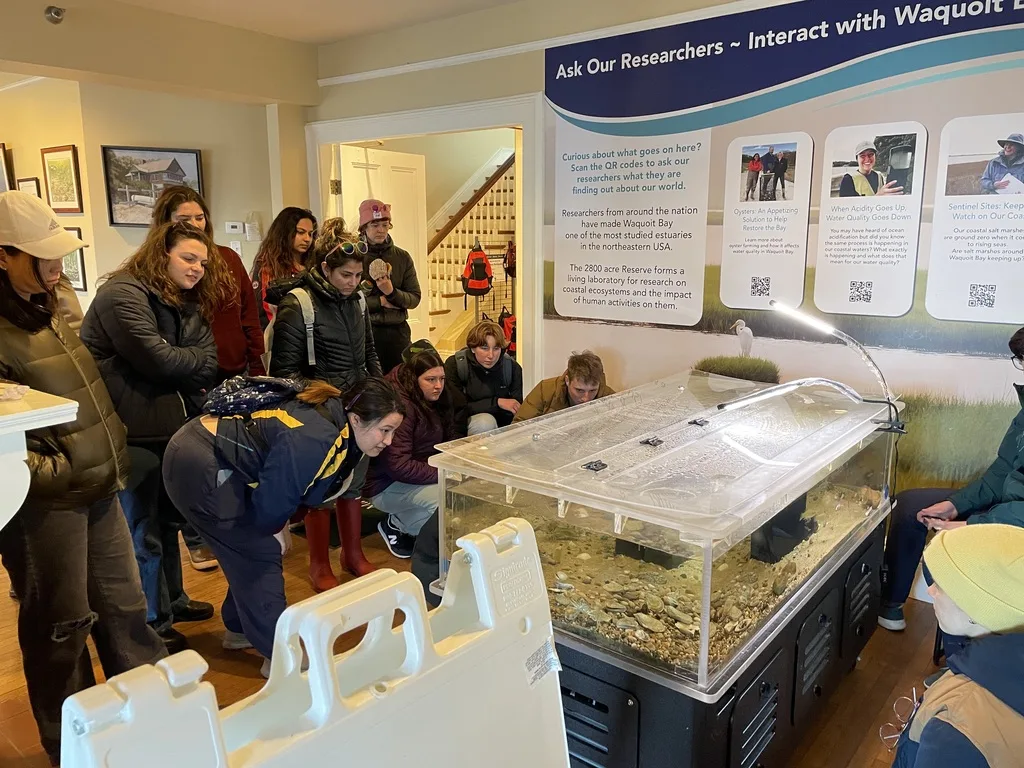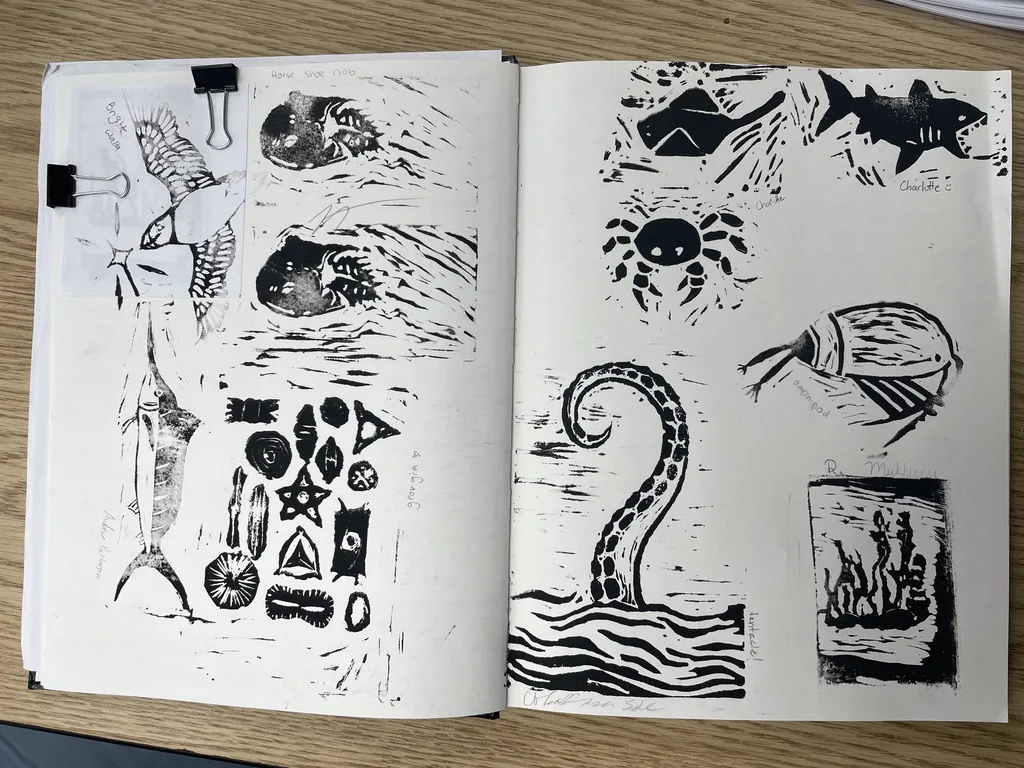Programs Blog
Views from Waquoit Bay

Date: 10 March 2025
Time: 1239
Location: SEA Campus, Falmouth, MA
Weather: 50°F, mostly sunny, wind 10 kts W
Hey everyone! I’m Andrew Patterson, a junior biology major at Hamilton College. With the academic schedule ramping up and the days closing until we board the Seamans in New Zealand, the time crunch is real. As we continue to hone our skills in nautical piloting, develop oceanography and public policy research projects, and explore how to effectively communicate science, S-321 has taken the opportunity to learn about the intersection of science and education on some recent field trips.
This past Friday, we visited the Waquoit Bay National Estuarine Research Reserve (WBNERR) twenty minutes down the road from our campus here in Falmouth. The National Estuarine Research Reserve System (NERRS) is a collection of federally funded and state-run estuaries – the wetlands found where freshwater rivers meet the sea – that protect and allow for the study of these vulnerable habitats. Covering 3.5 square miles, WBNERR features small streams that wind through sandy-soiled oak and pine forests before slowly emptying into brackish marshes, separated from the sea by quiet beaches that gently slope into the shallow Waquoit Bay. The bay’s beaches are lined with myriad oysters, mussels, and clams. As the cold wind whips down the beach at our backs, we pass a motionless horseshoe crab. In the summer, the skies are frequented by cormorants and ospreys – architects of great stick nests that decorate the dead treetops – that feed on the many fish species of the bay. But on this frigid March afternoon, our only avian companions are a solitary heron and a few gulls.
On our arrival, we piled into the reserve’s visitor center, where stewardship coordinator Ryan Clark told us about the purpose, history, and foundational philosophy behind WBNERR and other sites in the NERRS. Education coordinator Jayne DiCandio then brought us outside, where the reserve collaborates with the Mashpee Wampanoag Tribe for an exhibit of a traditional bark house and an under-construction dugout canoe. From there we were guided on a tour of the marshes and beaches of the reserve by Jayne and researcher Theo Collins (SEA C-207 alum!), where we learned about threats to the delicate marshes and shallow bay, and ways to protect them. While we walked down the beach – taking the time to distract ourselves with oysters, razor clams, and a dead horseshoe crab – we listened to Jayne and Theo explain how a layer of woodchips buried under the beach absorbs pollutants like fertilizer runoff, resulting in improved water quality that is actually visible in the summer.
From the beach, Theo led us past the reserve’s weather station and into its lab, a room reminiscent of a large storage closet (not an insult, it was cozy, I swear). Here we learned about the role of citizen science in water quality assessments and the instruments used (very similar to the ones we’ll use on Seamans). We discussed the challenges of standardizing data across a nation-spanning system and the relationships that WBNERR has built with other institutions. All of it combines to allow WBNERR to do impactful research.
We finished back at the visitor center, where we had some time to roam. We didn’t go far, and soon almost all of us were clustered around the center’s fish tank, which houses animals caught from the bay itself. Waldorf and Statler the northern sea robins and Cheeto the spider crab dominated our attention. But perhaps the tank’s most impressive residents, at least in contrast to their humble appearance, were the mummichogs. Although it looks like a simple minnow, the mummichog – Narragansett for “going in crowds” – holds an impressive resume. Besides being one of the few fish species in the US to retain its indigenous name, the mummichog boasts a truly incredible tolerance to toxic conditions, often being the only fish found in highly polluted waterways. This hardiness means they are favorites for scientific study and were even the first fish in space.
So, I guess this is where I end with something cheesy about not judging books by their covers, whether the book is a little minnow or a lab that looks like a closet.
Shoutouts:
To Mom, Dad, Carlos, and Christina, make sure all the cats and Rocky get lots of pets for me.
Maria, Daniel, and Paul, the same goes for Dante, Helix, and Soot.
To everyone else, whatever continent you’re on, remember that this is only a temporary reprieve from my usual bombardment of questionably useful information. Savor it while you can.

Recent Posts from the Ships
- Ocean Classroom 2024-A collaborative high school program with Proctor Academy
- Collaborations and Long-term Commitments: SEA’s Caribbean Reef Program Sets a Course for Coastal Programs that Compliment Shipboard Experiences.
- Sea Education Association students prepare for life underway using state of the art nautical simulation from Wartsila Corporation.
- SEA Writer 2022, Magazines From the Summer SEA Quest Students
- Technology@SEA: Upgrades Allow Insight into Ocean Depths
Programs
- Gap Year
- Ocean Exploration
- High School
- Science at SEA
- SEA Expedition
- SEAScape
- Pre-College
- Proctor Ocean Classroom
- Protecting the Phoenix Islands
- SPICE
- Stanford@SEA
- Undergraduate
- Climate and Society
- Climate Change and Coastal Resilience
- Coral Reef Conservation
- Marine Biodiversity and Conservation
- MBL
- Ocean Exploration: Plastics
- Ocean Policy: Marine Protected Areas
- Oceans and Climate
- Pacific Reef Expedition
- The Global Ocean: Hawai'i
- The Global Ocean: New Zealand